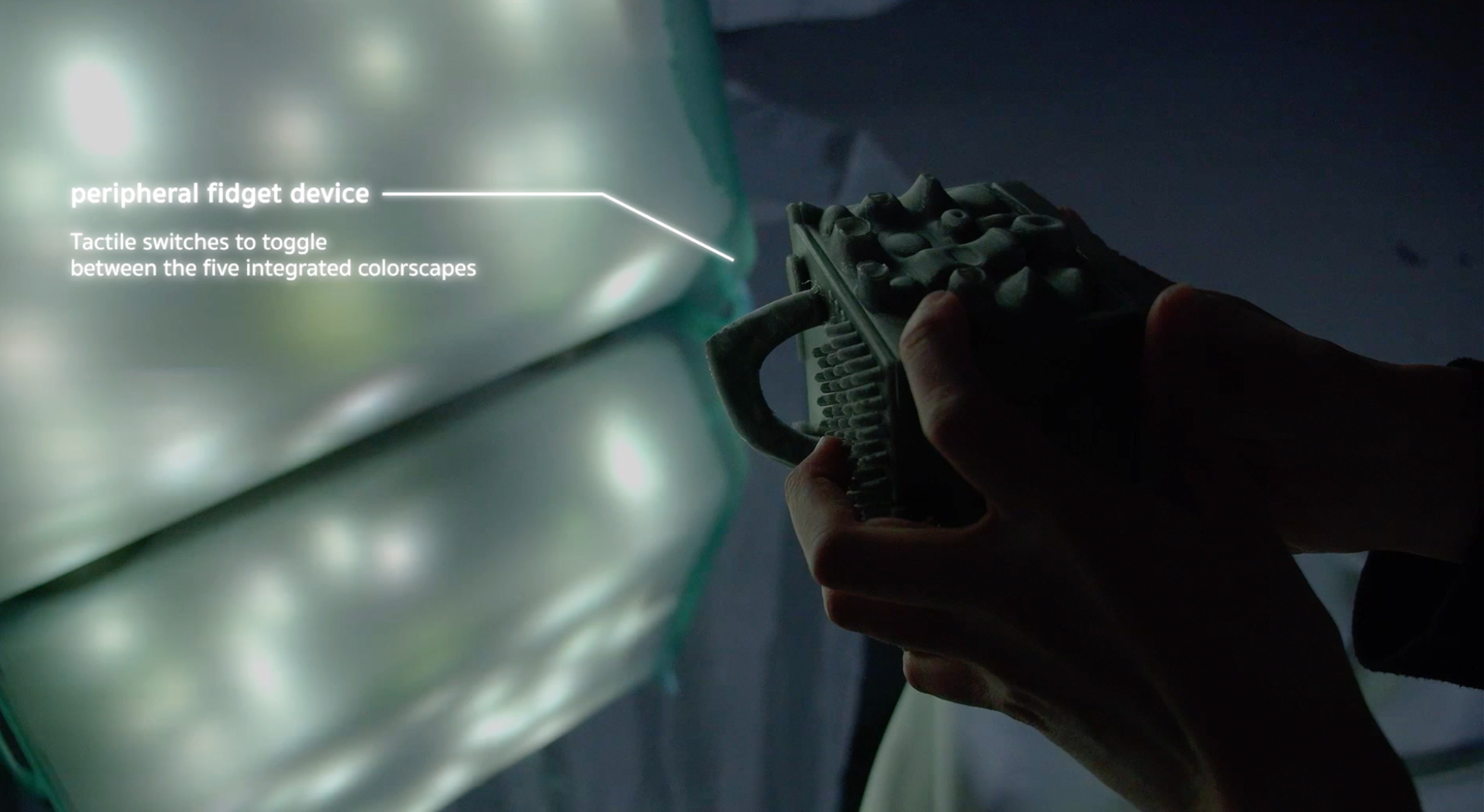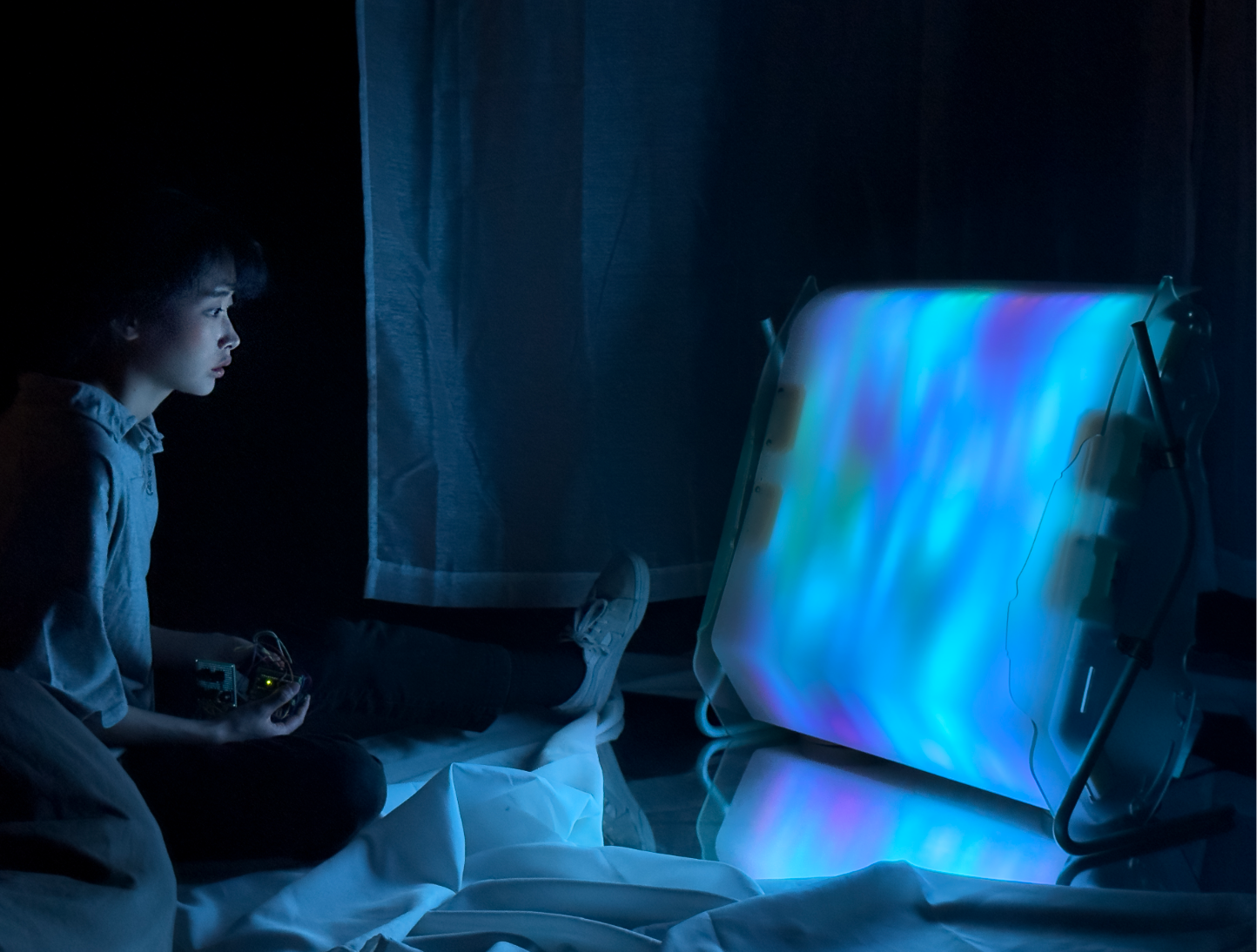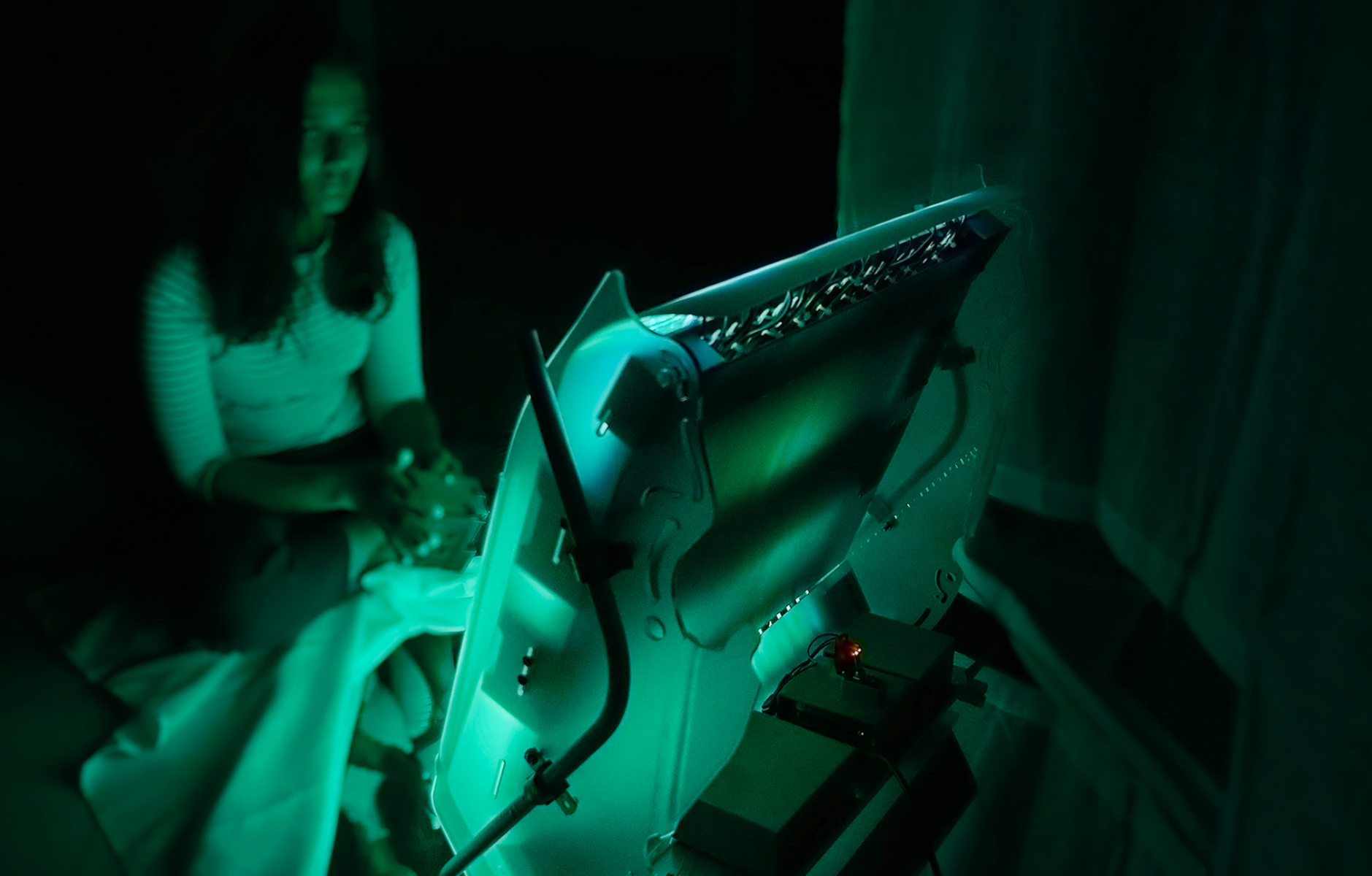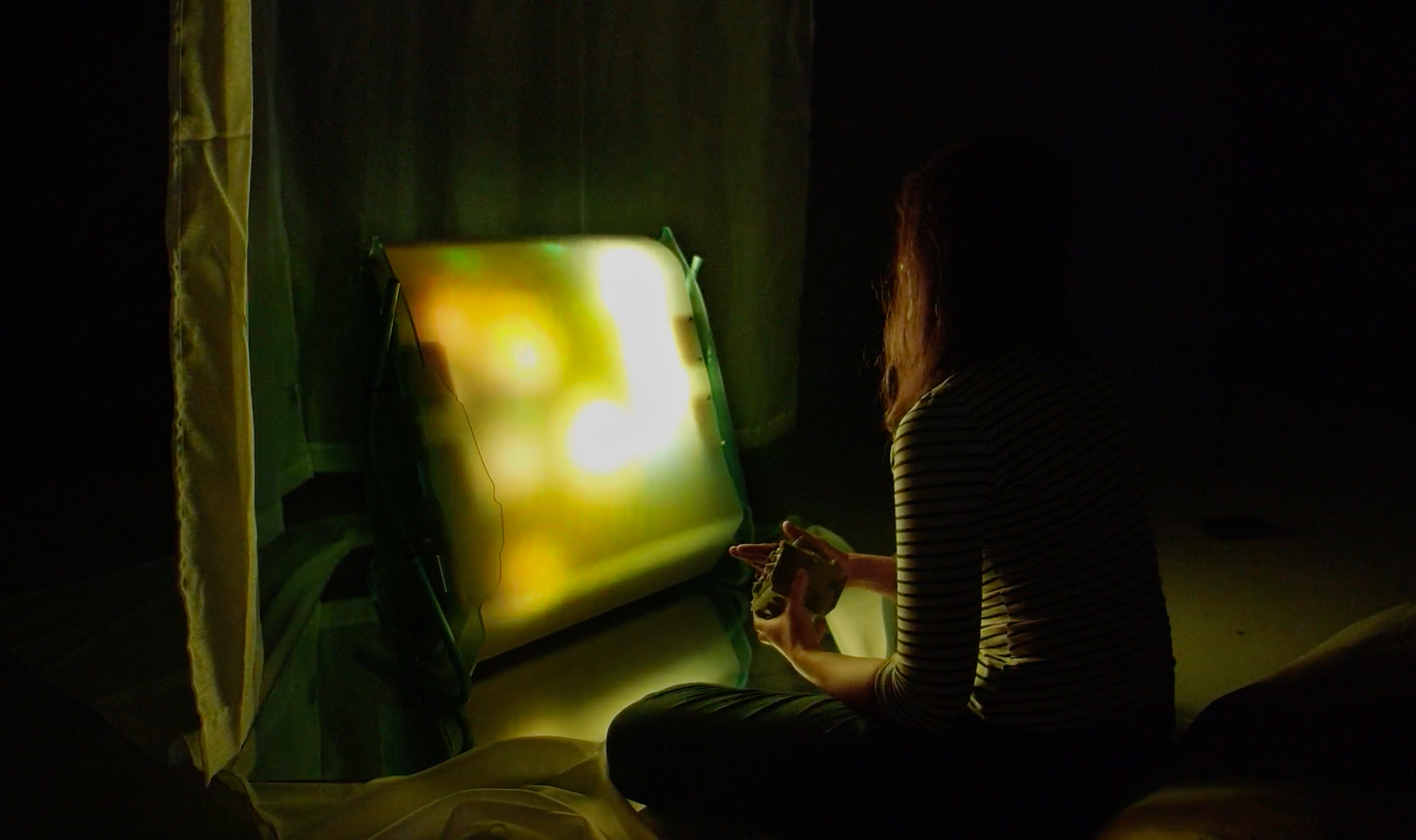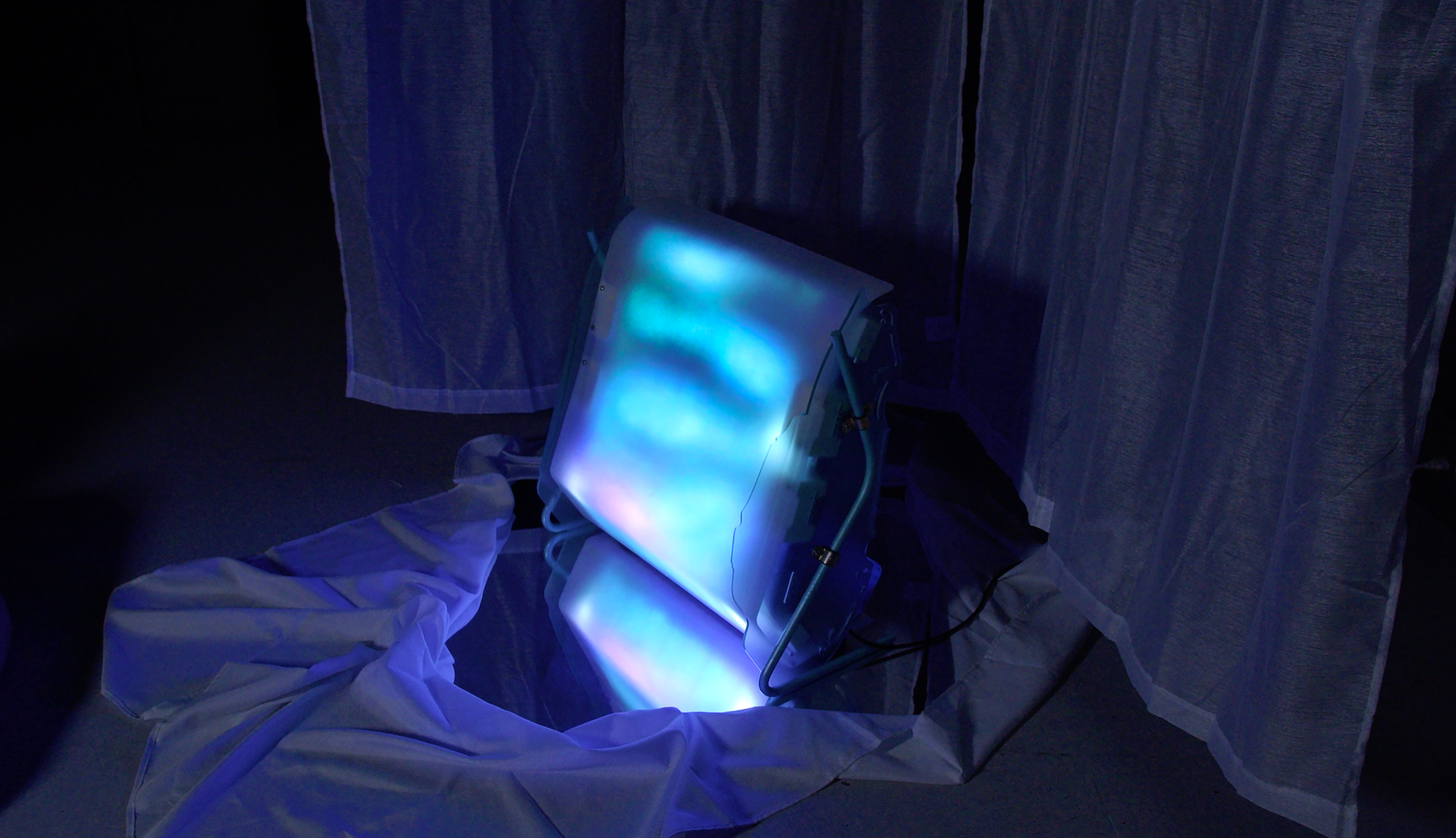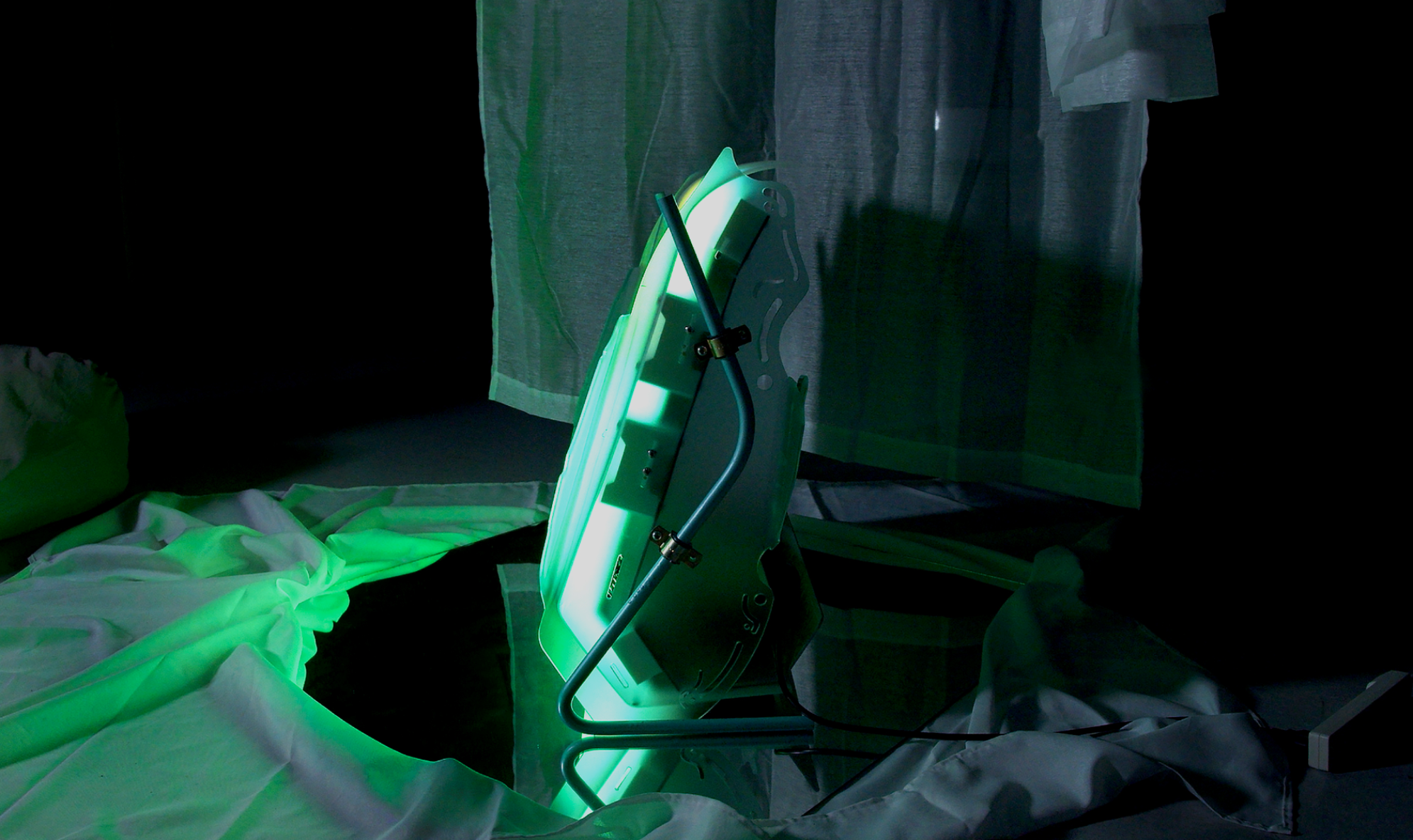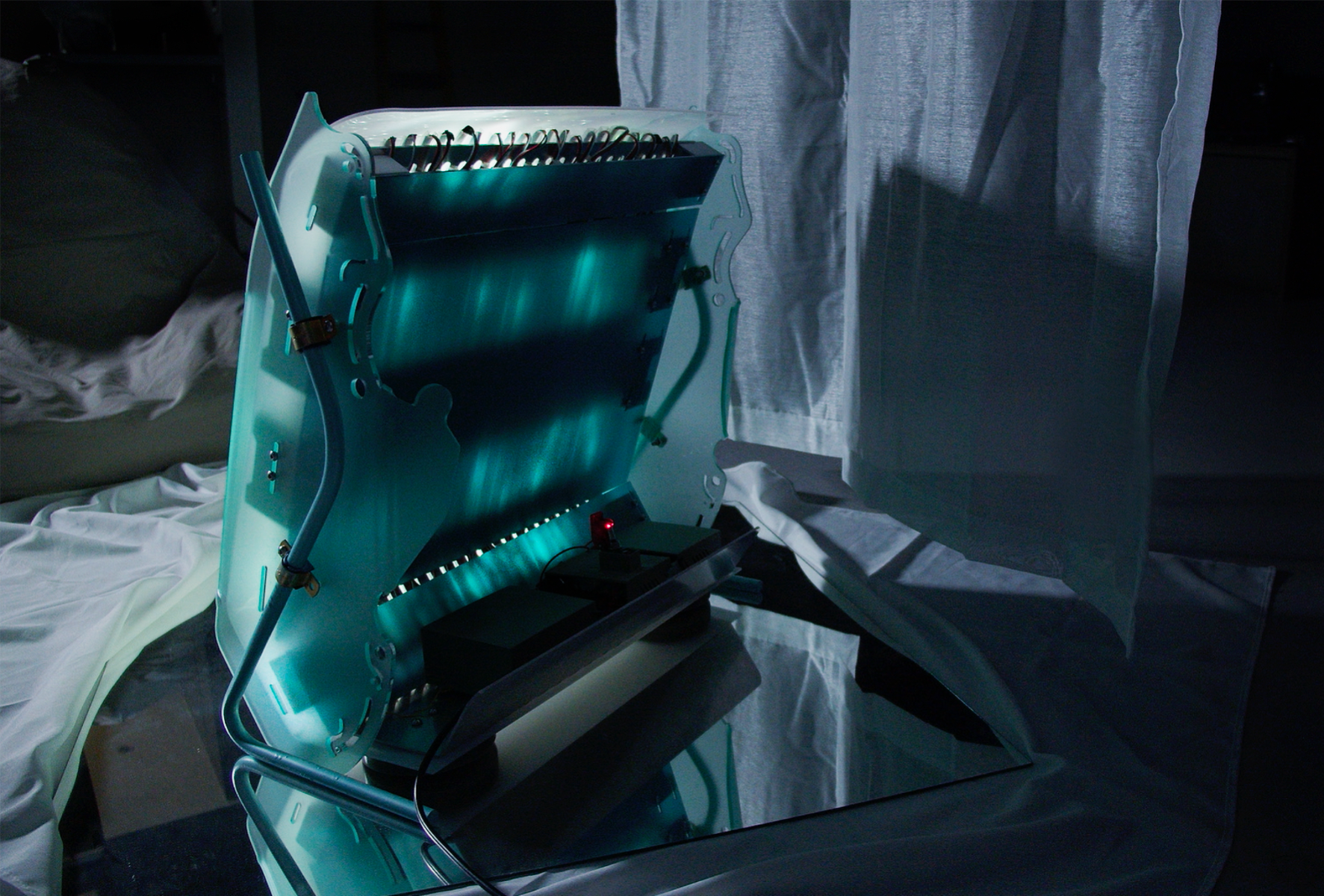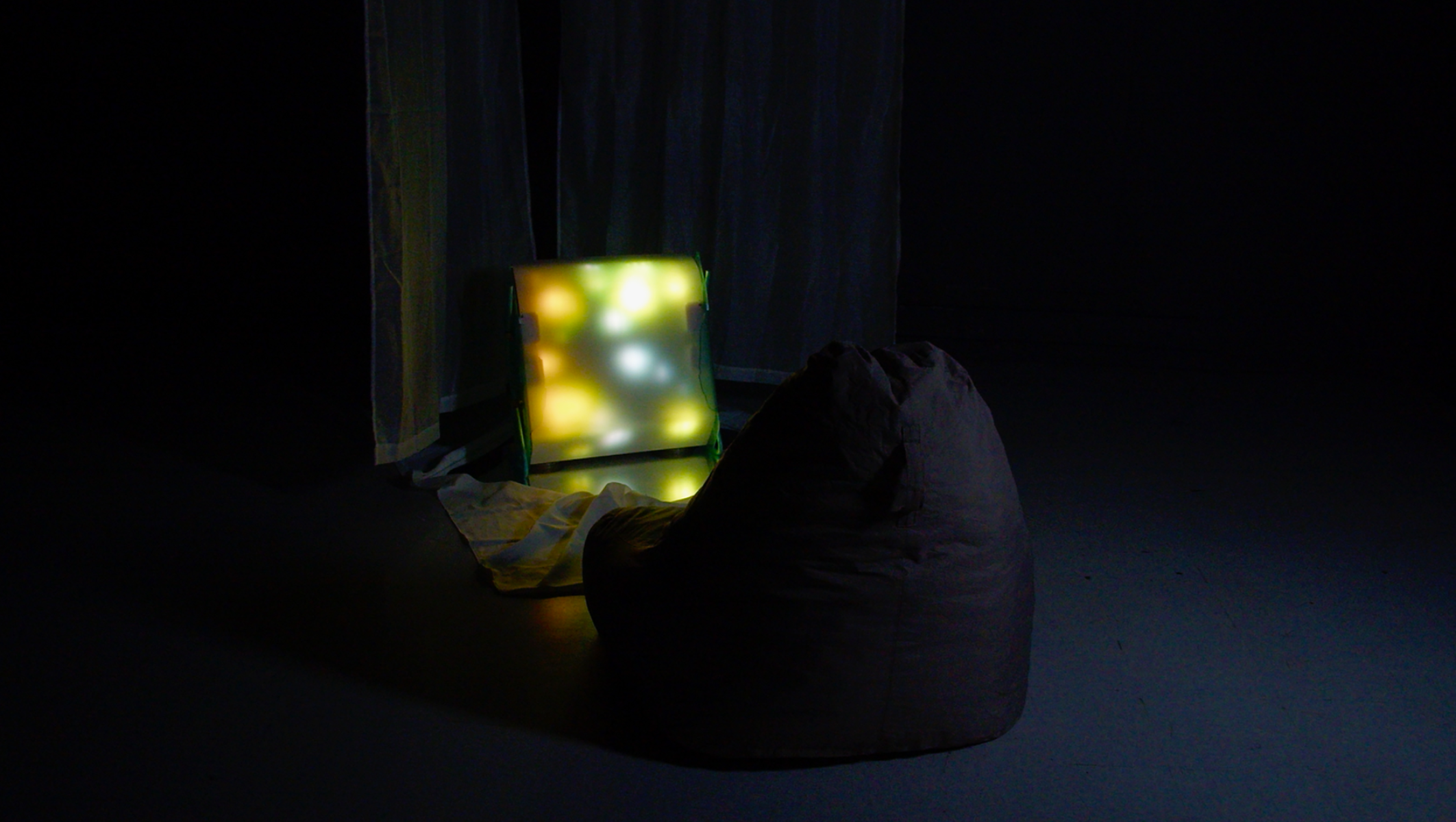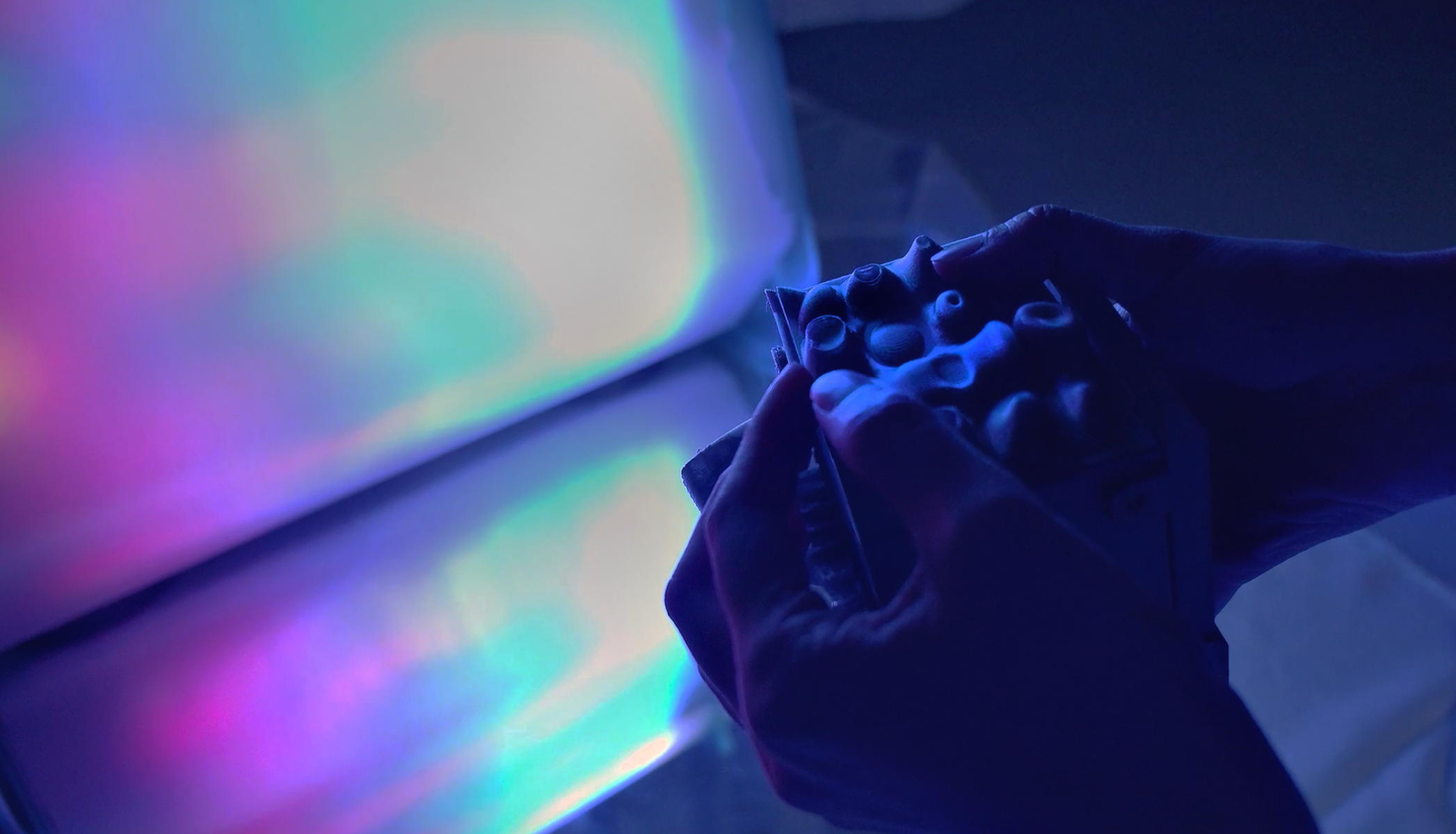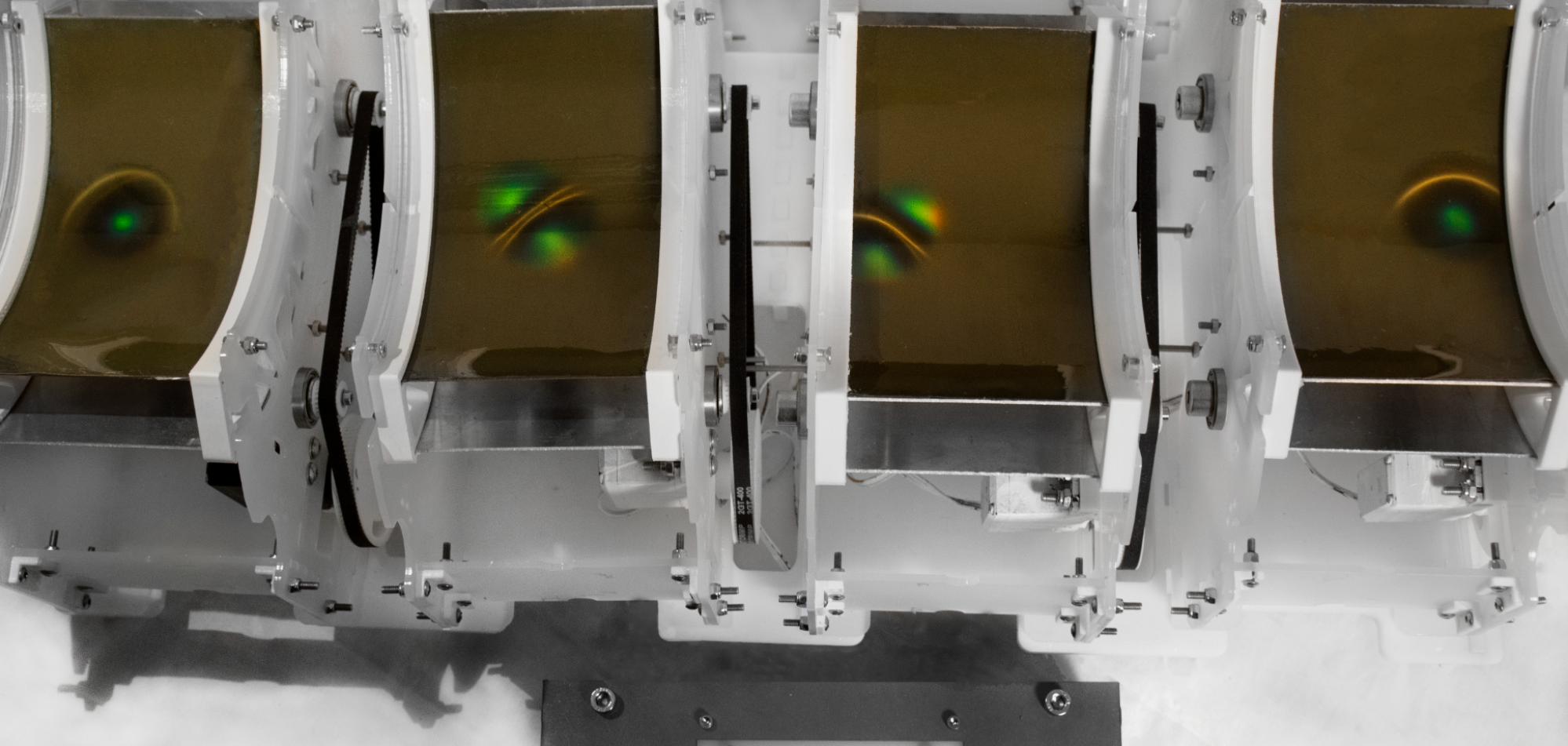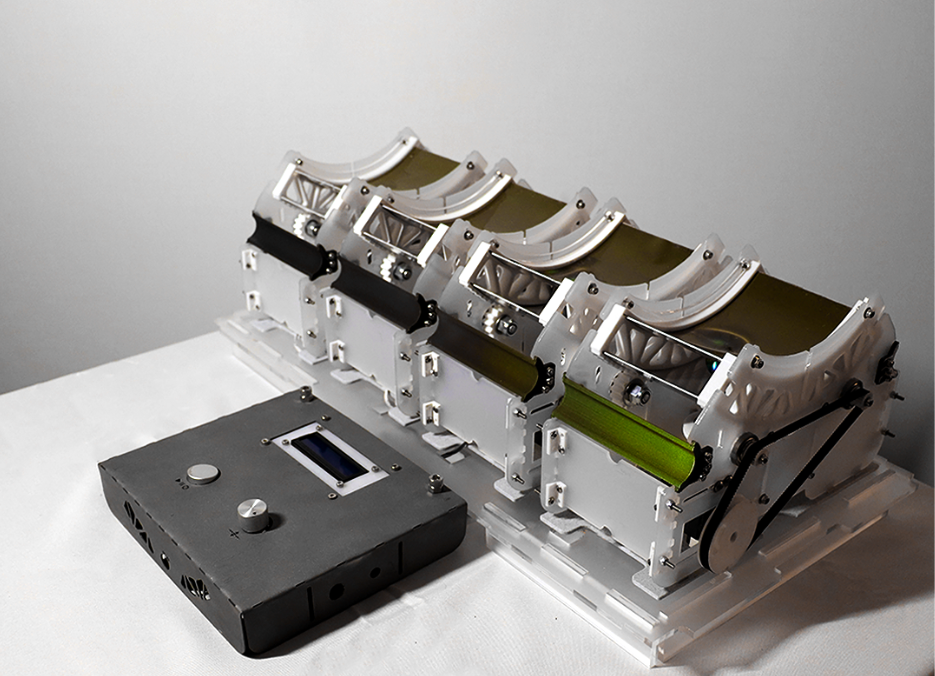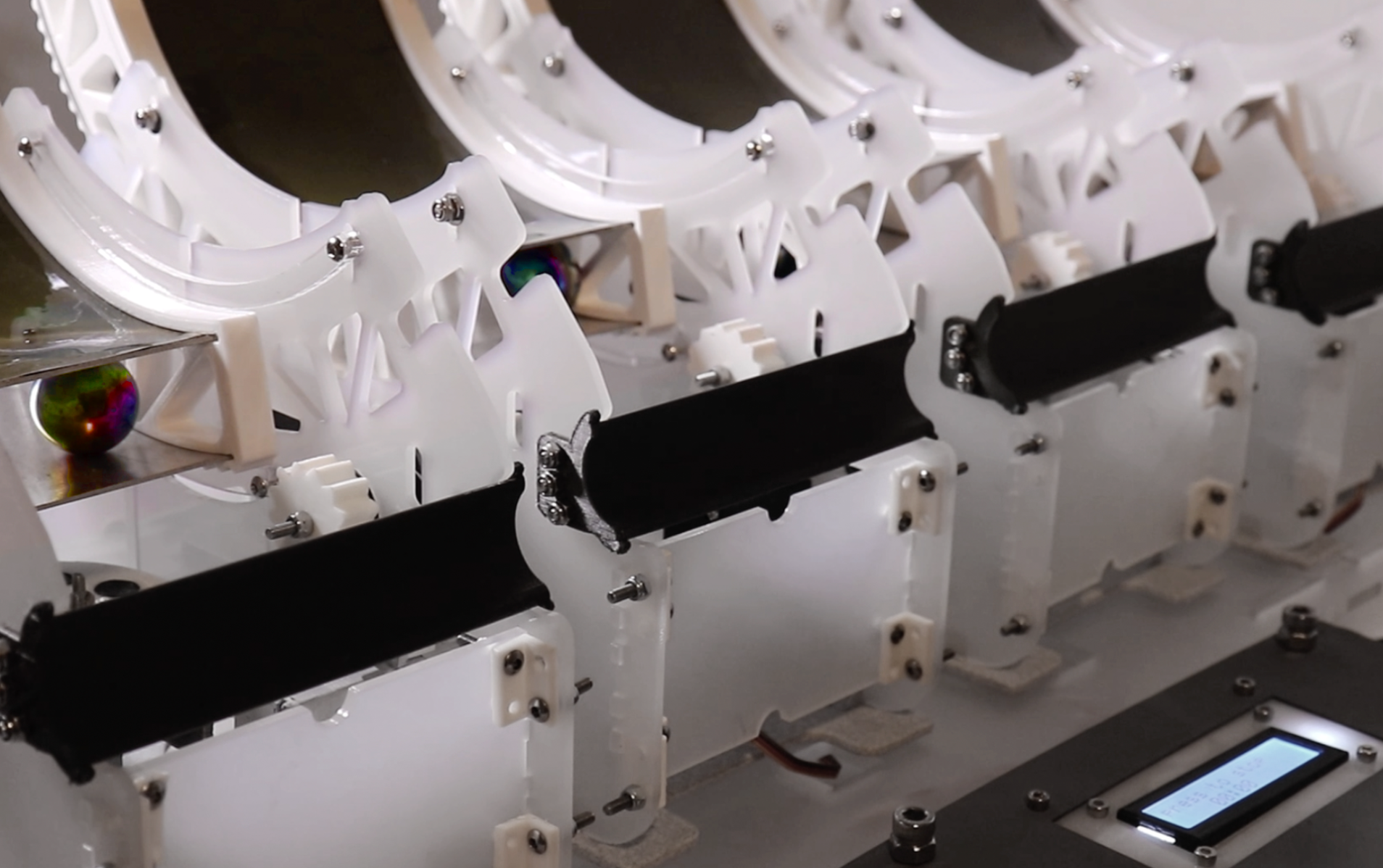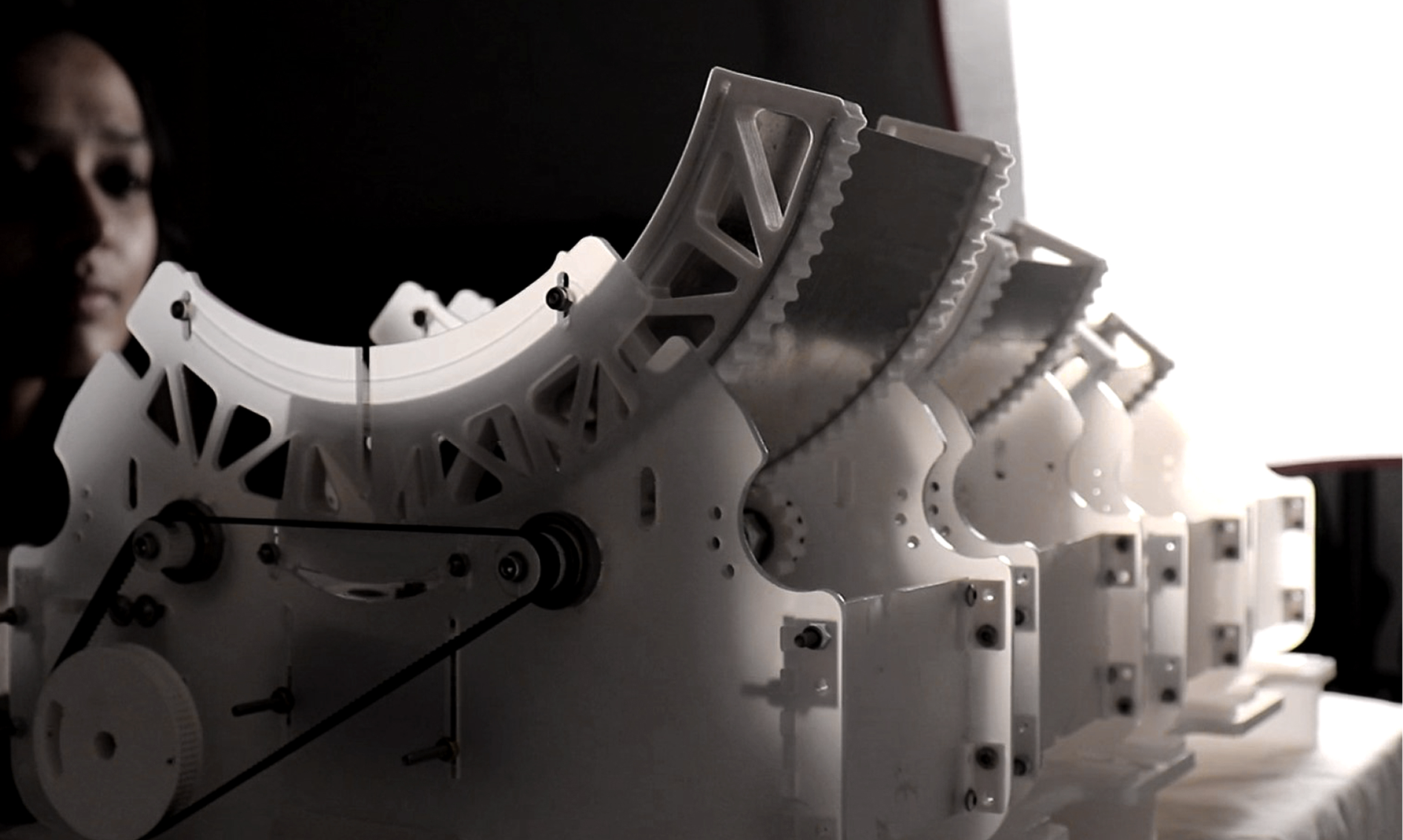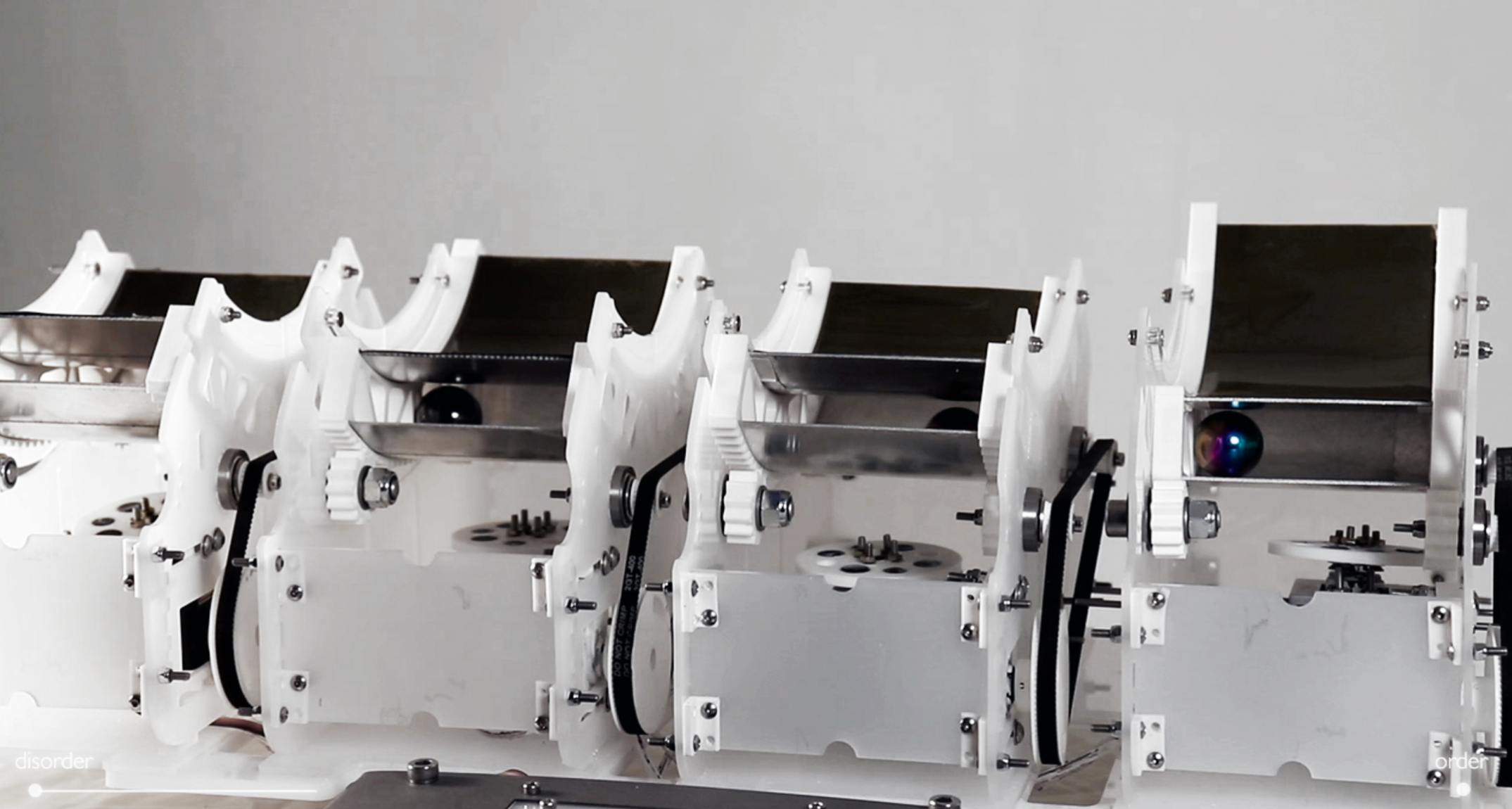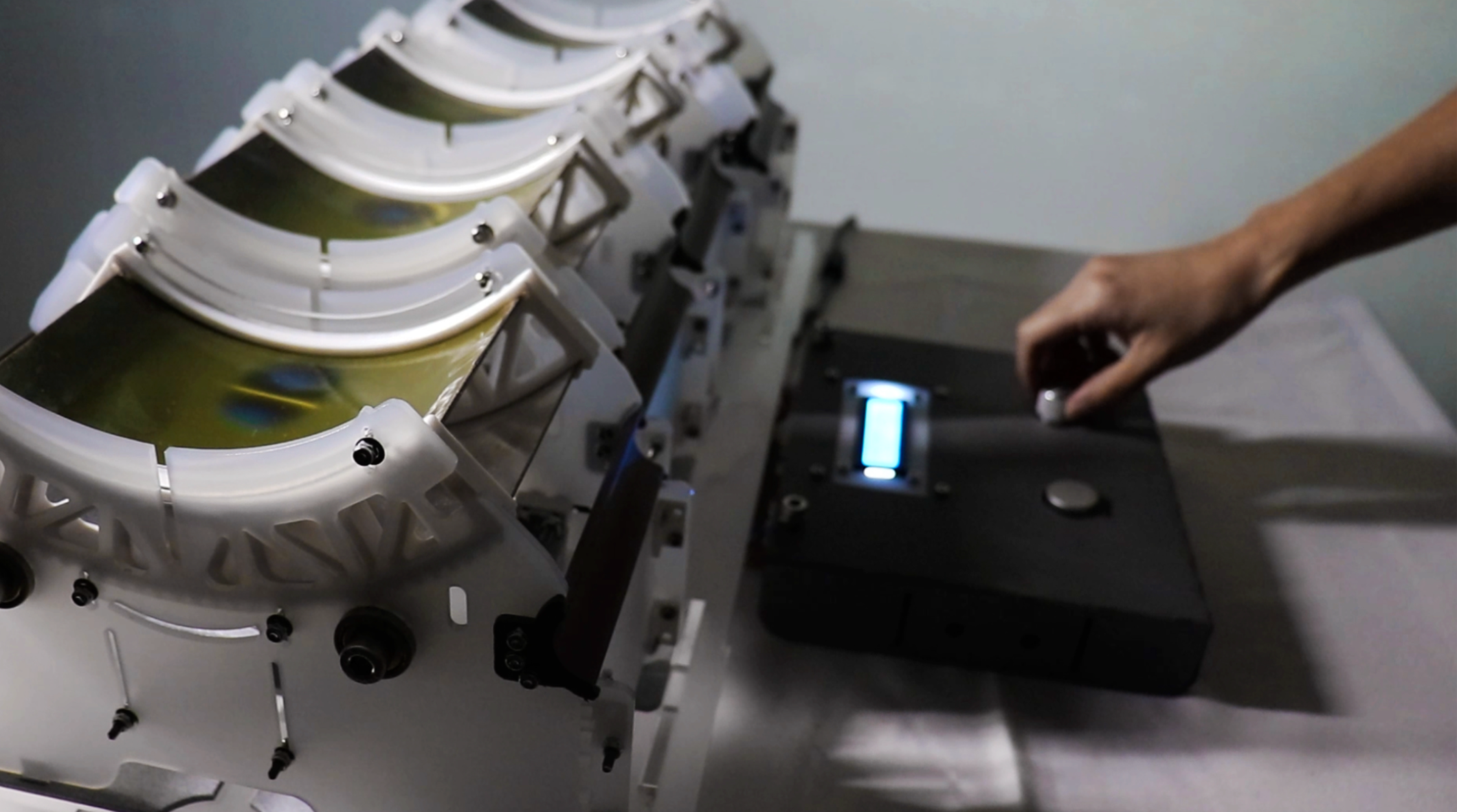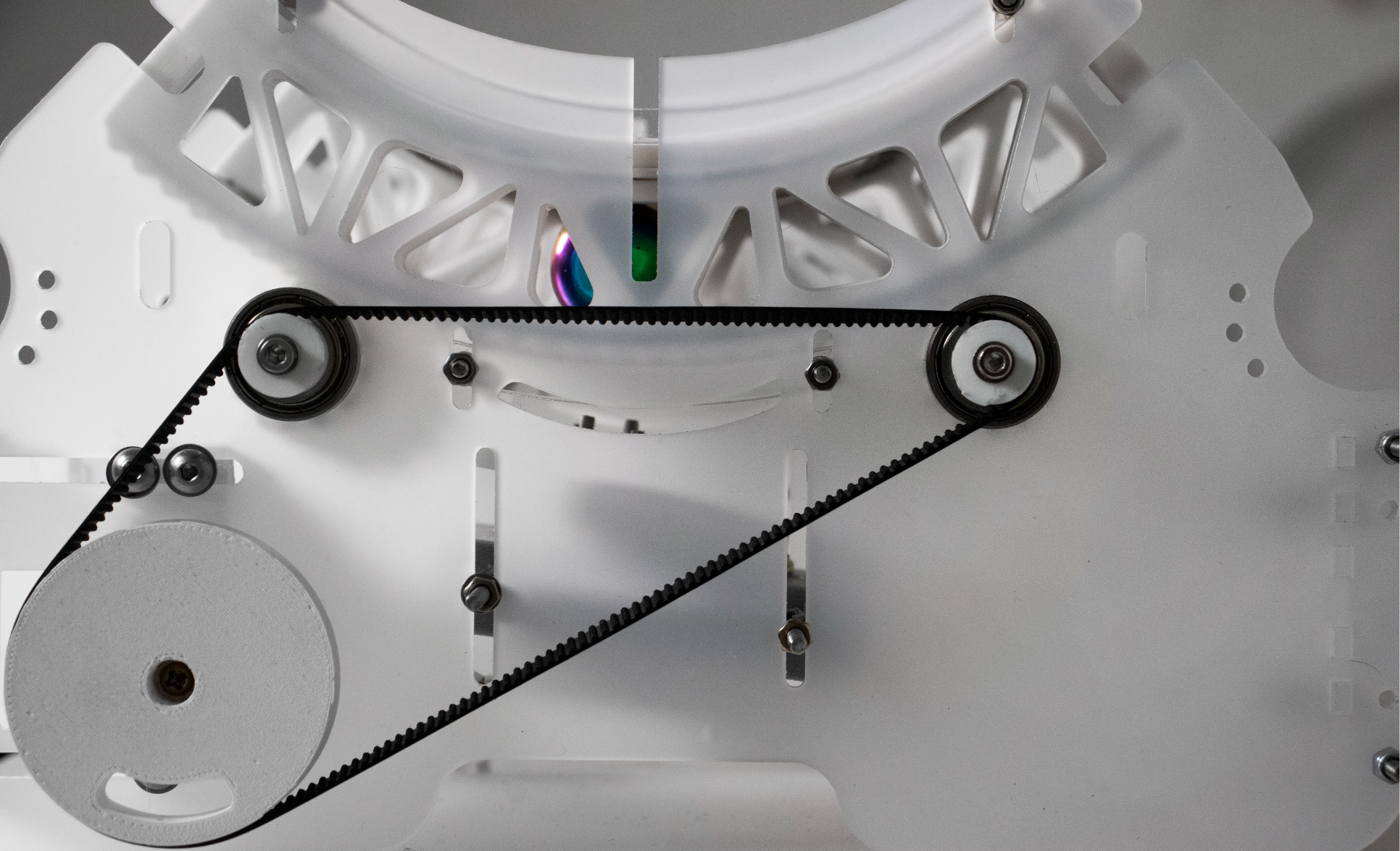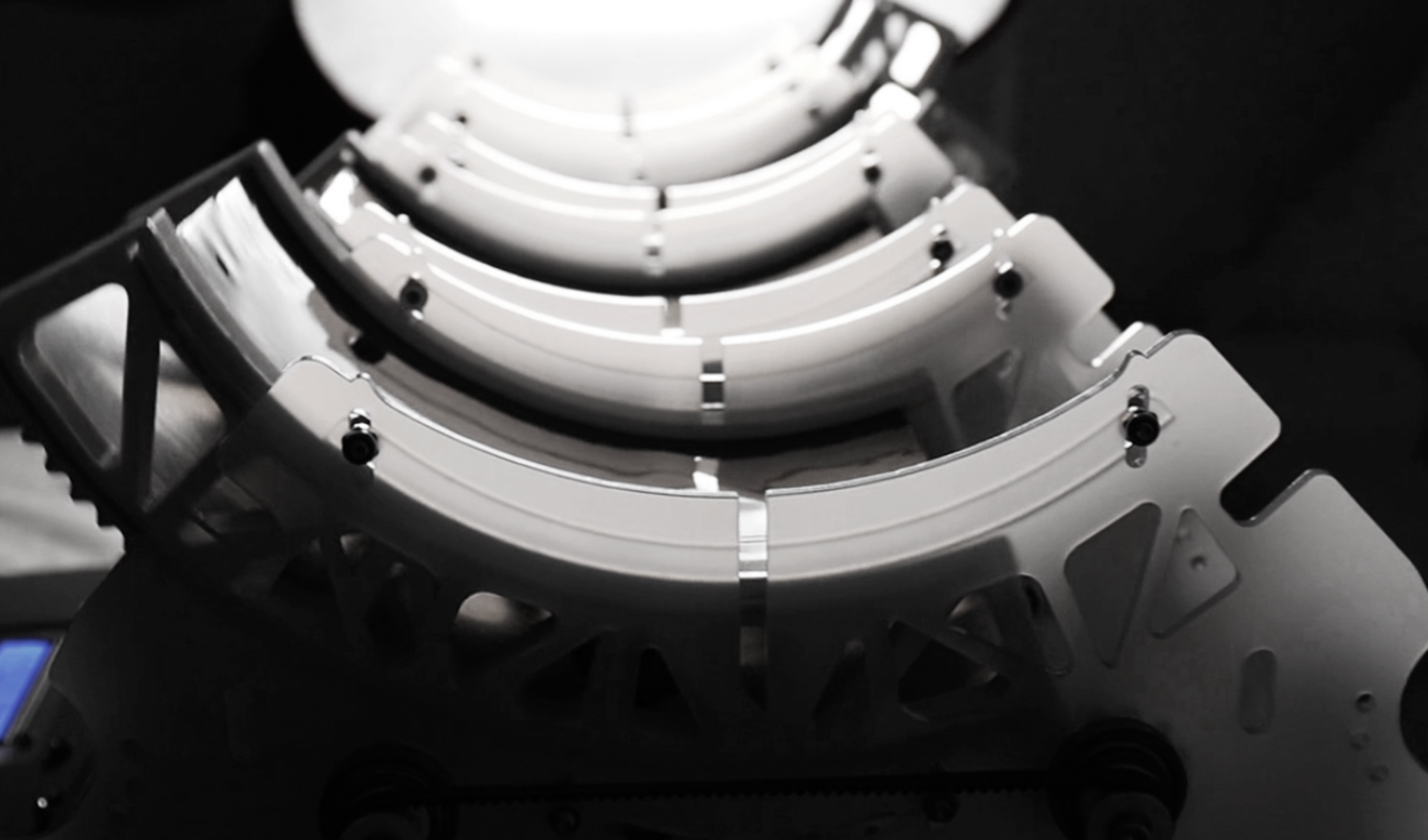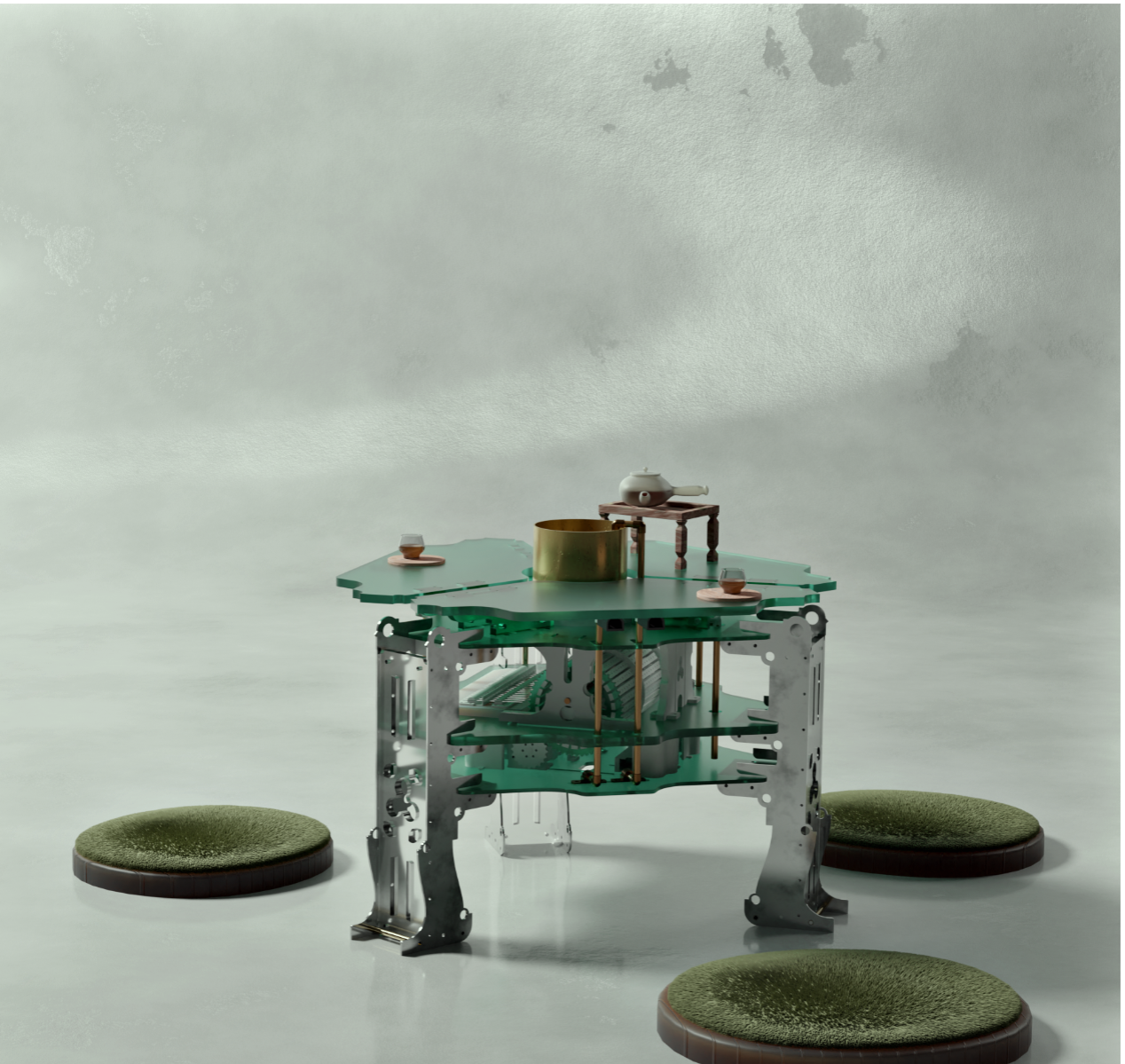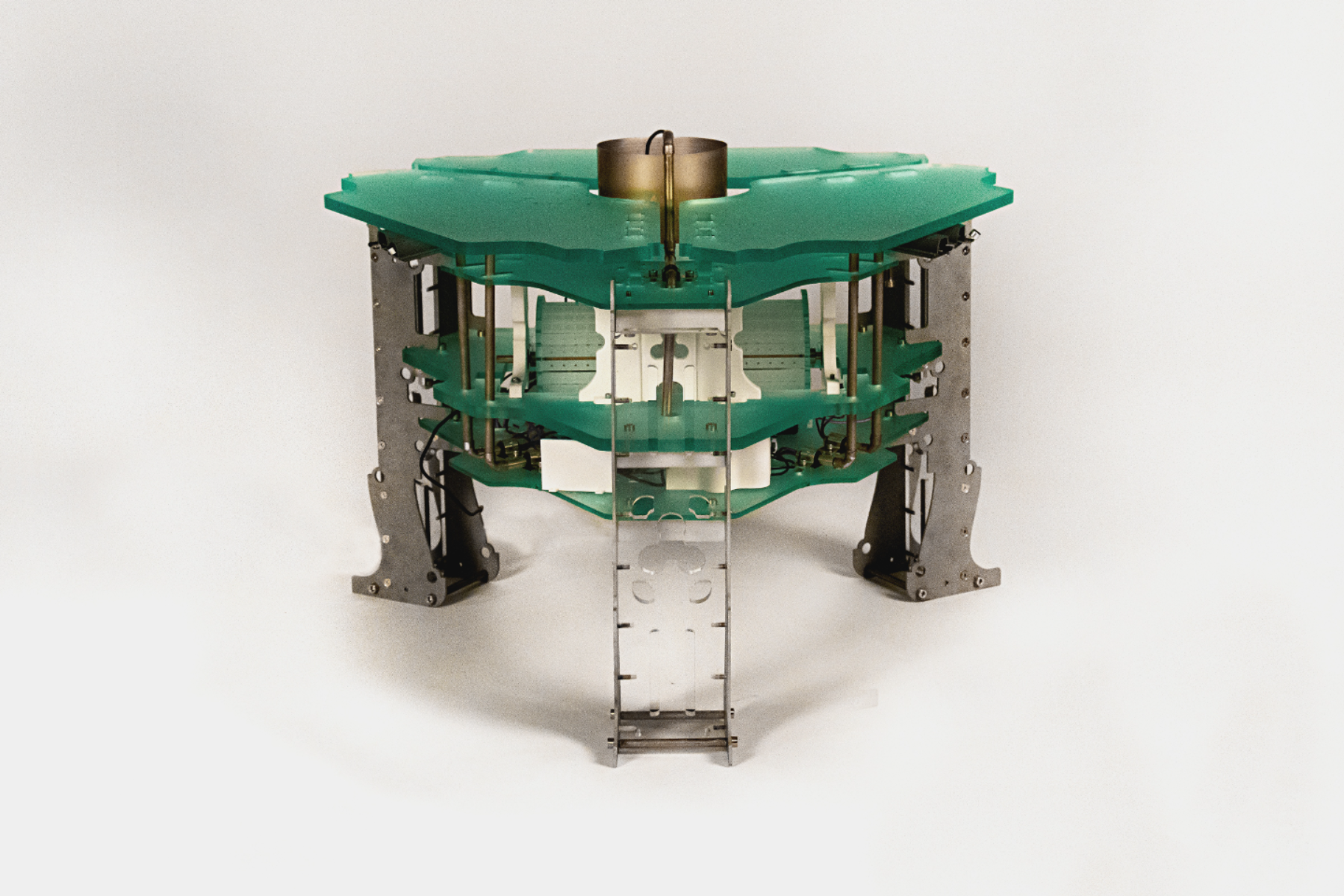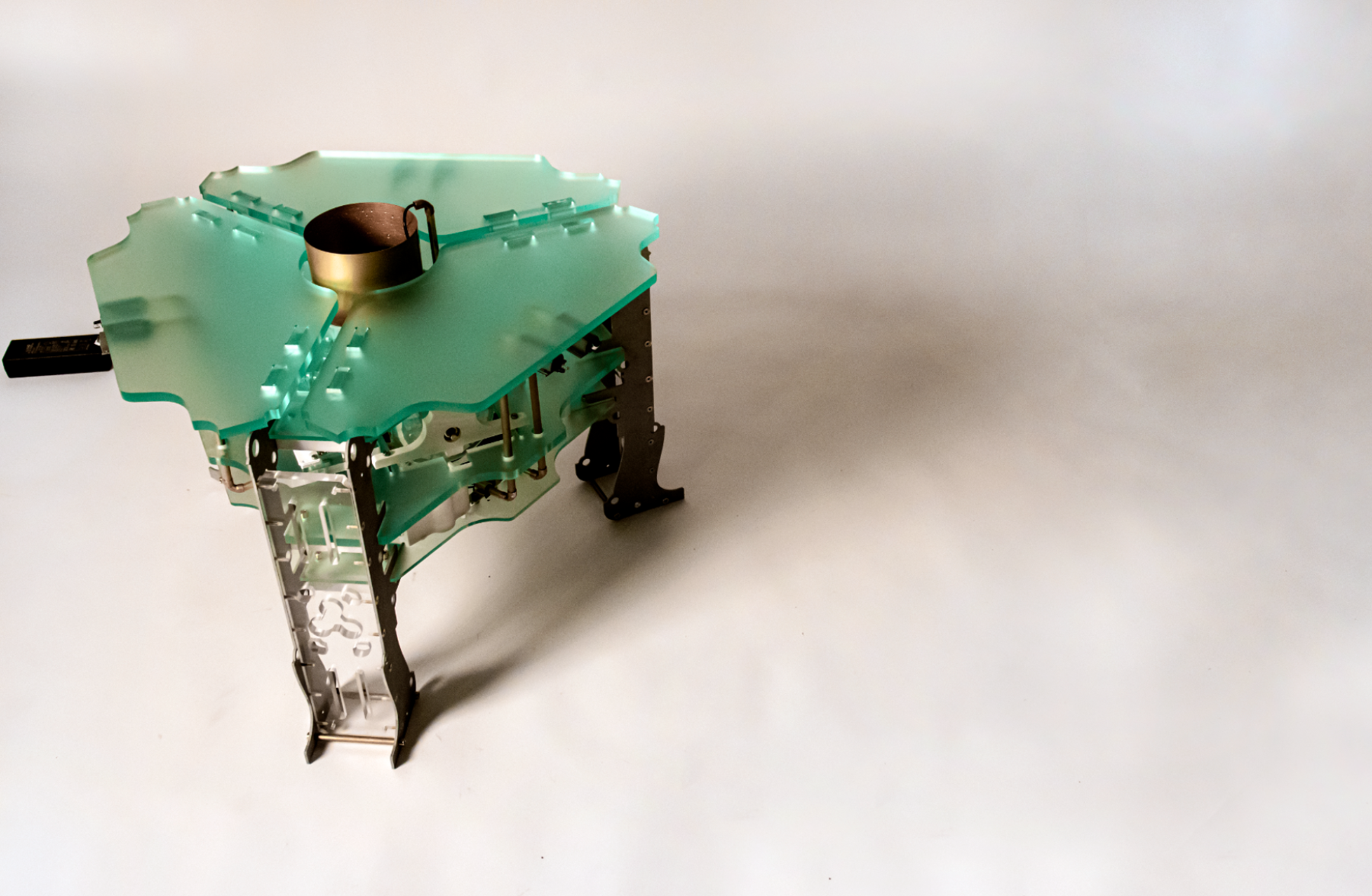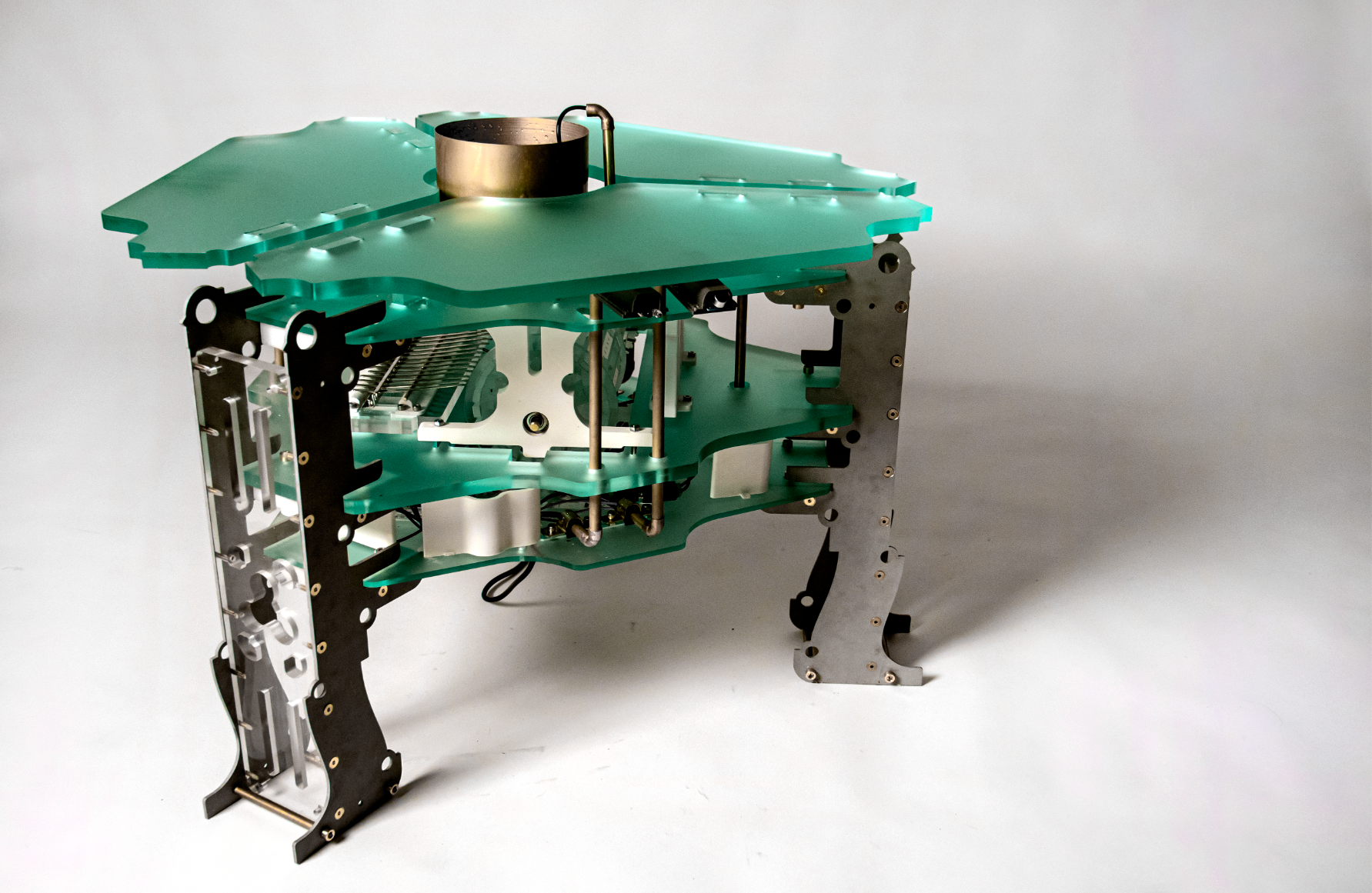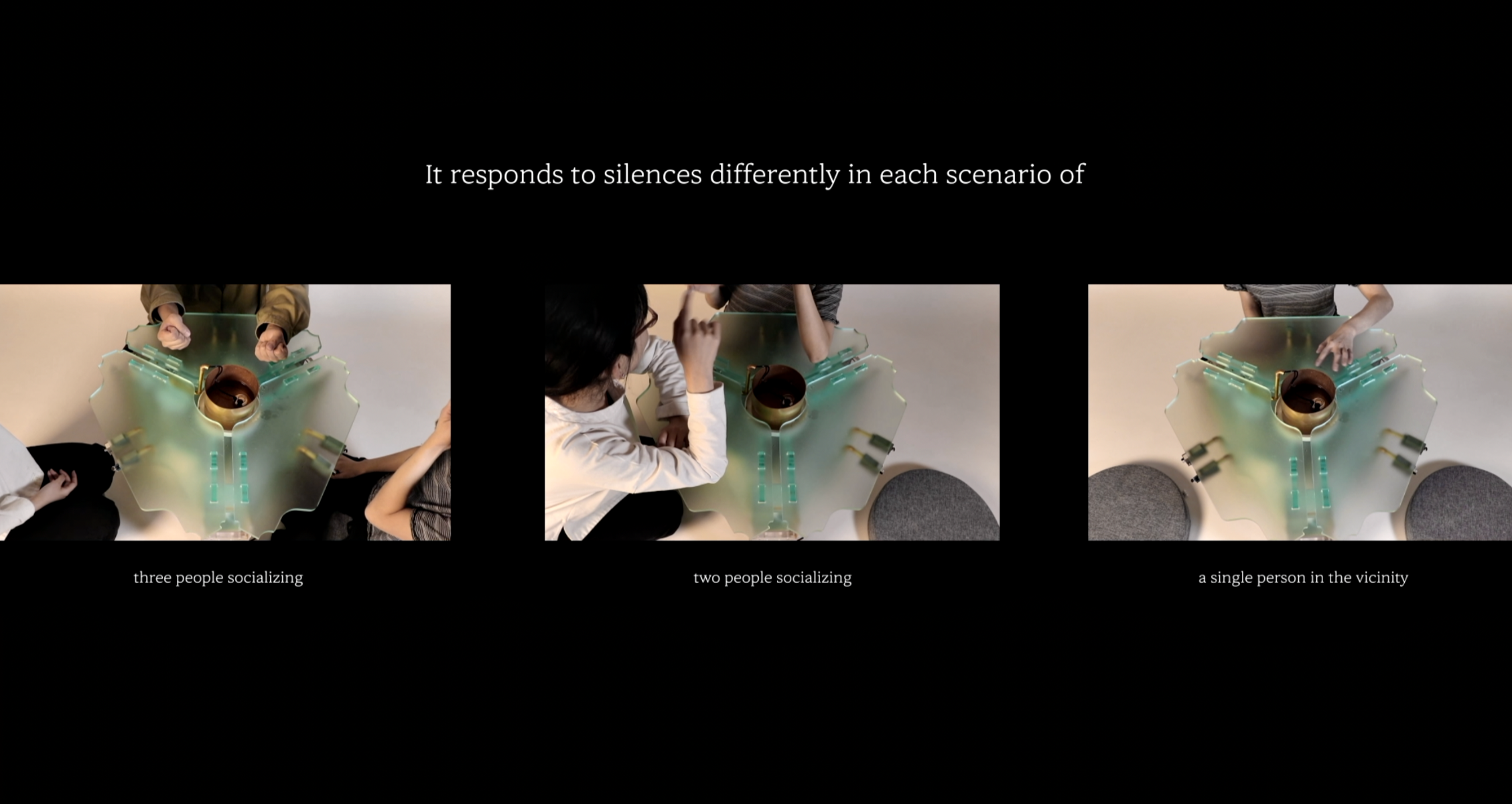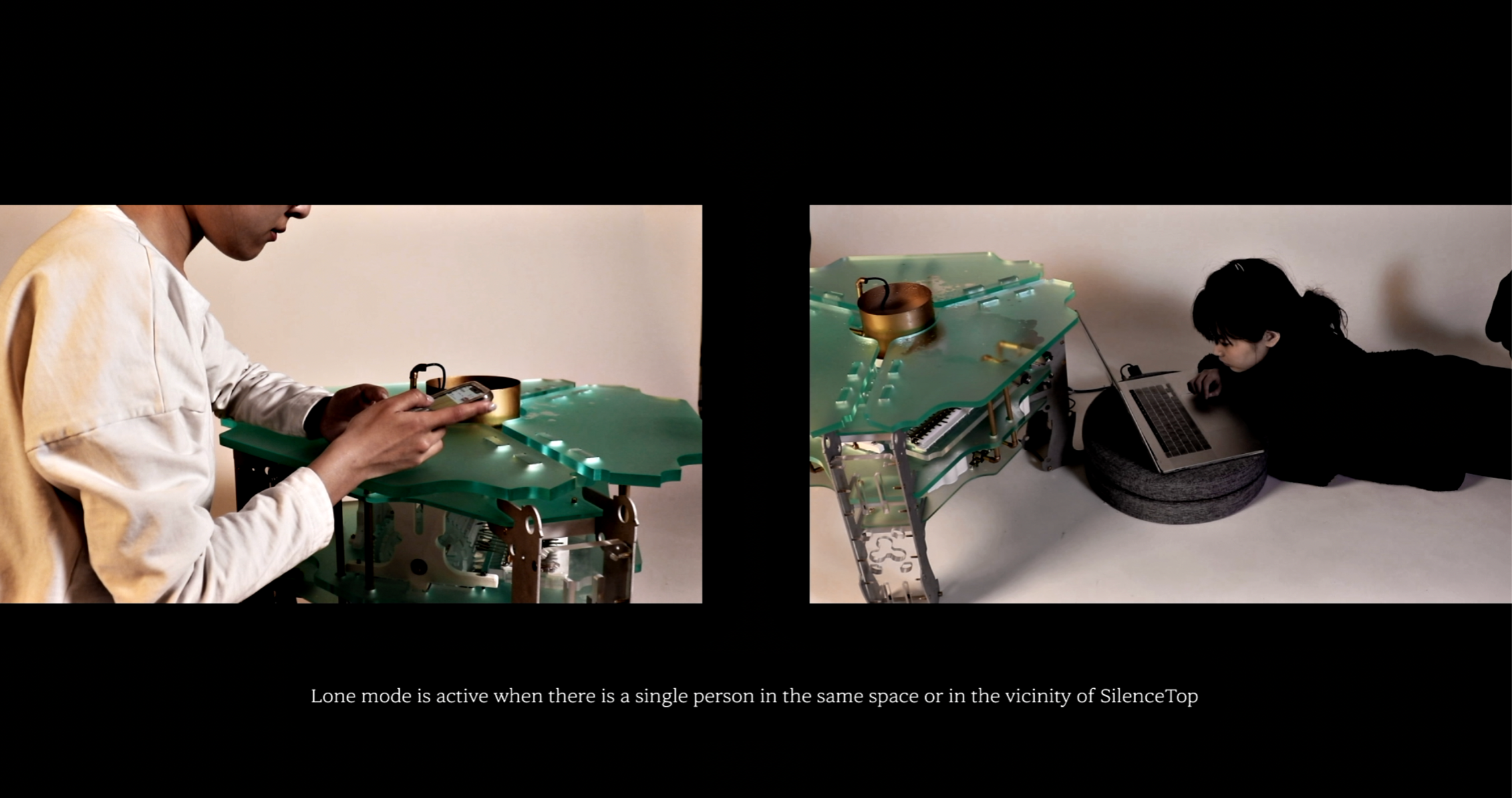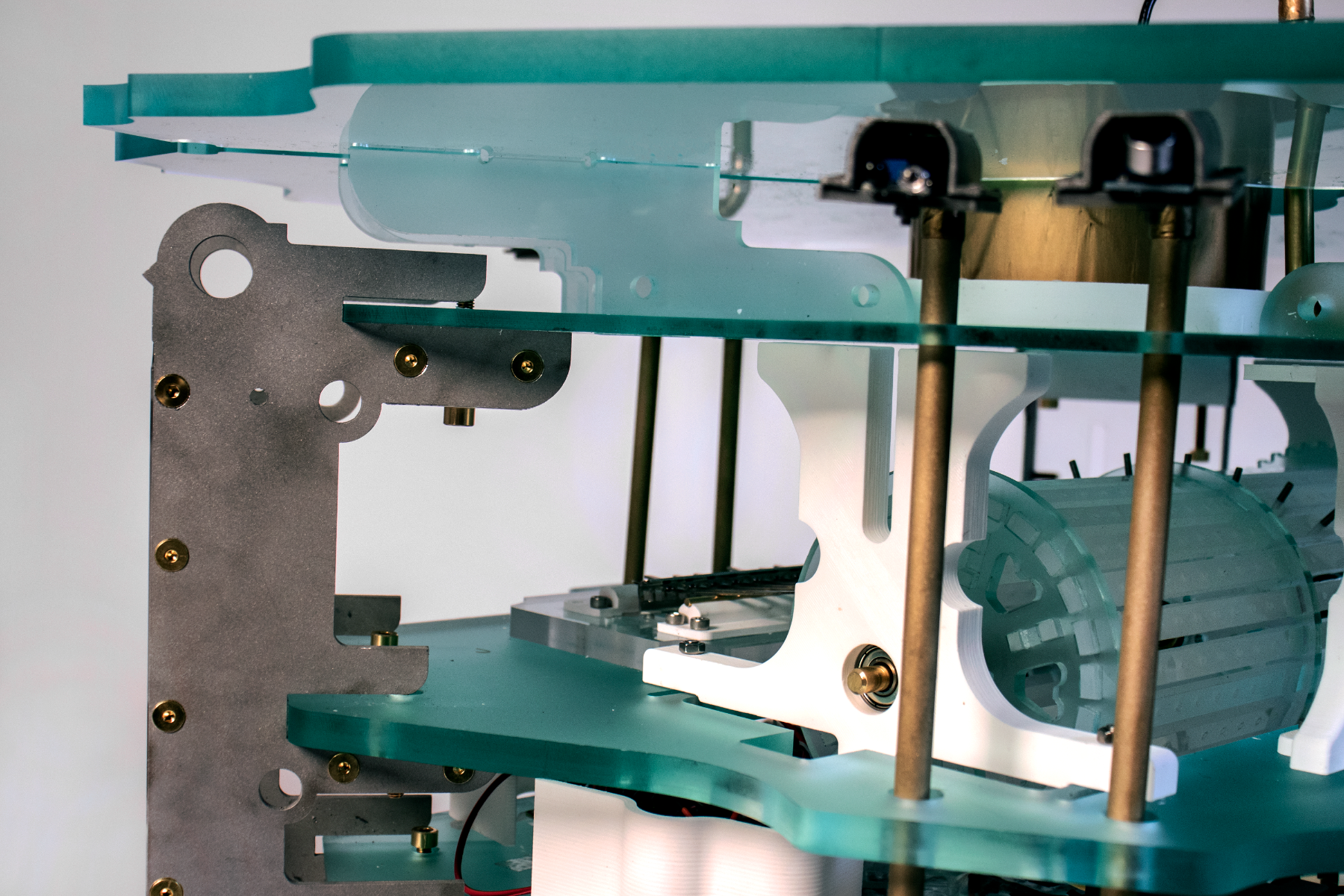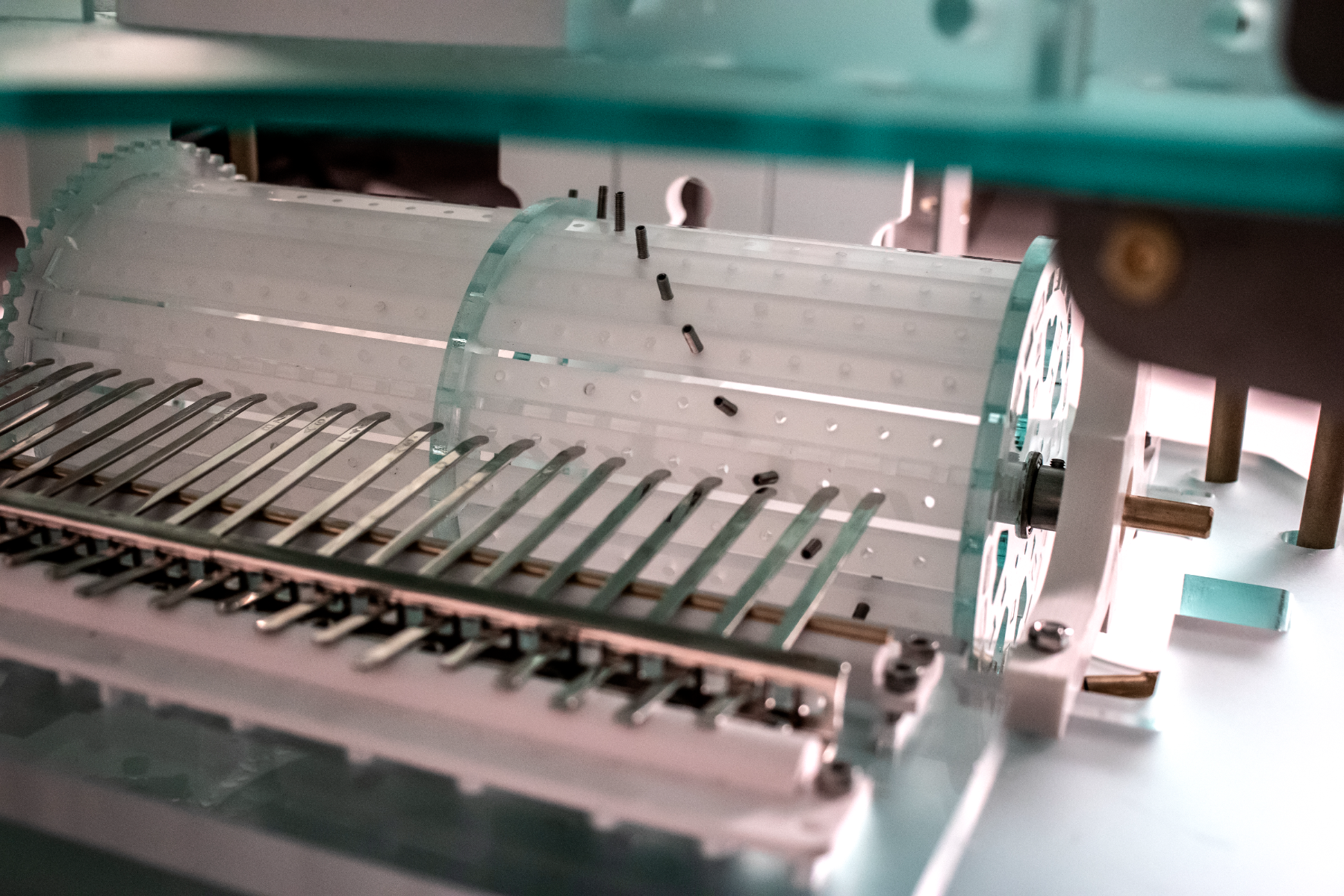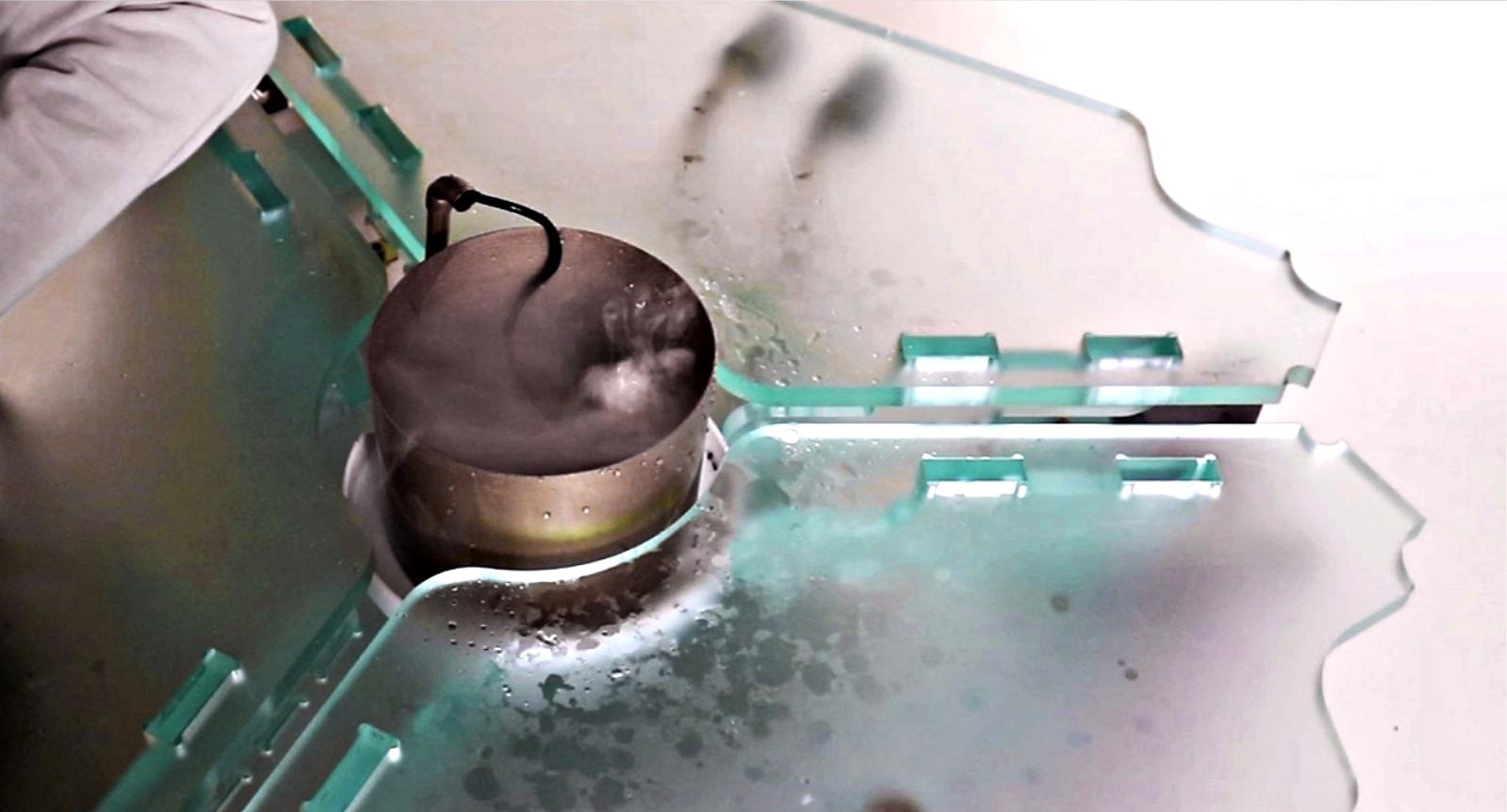Reina Mun
design technology
MIT Massachusetts Institute of Technology
Specialisms: Design and Technology / Design Research /
Location: Cambridge MA, United States


Reina Mun

First Name: Reina
Last Name: Mun
Specialisms: Design and Technology / Design Research
Sectors:
My Location: Cambridge MA, United States
University / College: MIT Massachusetts Institute of Technology
Course / Program Title: design technology
About
Reina Mun is a designer and researcher with interests in dynamic sensory interventions, machine learning, and context-aware systems. Her research focuses on investigating ways to embed intelligent buffers in people's immediate surroundings to mediate affective-cognitive responses through physical and material-based approaches.
luminous solace: choreographing radiance with fidgeting motions
Luminous Solace transforms the simple, often unnoticed act of fidgeting into an embodied sensory interaction. Like a hidden canvas between body and light, this intelligent interactive light serves as a living interface where subconscious gestures choreograph an evolving visual symphony rippling across an LED matrix. Each fidgeting motion, classified through the embedded ML model, drives the generative graphics, where each micromovement becomes a brushstroke of digital expression, resulting in ever-changing patterns that pulse and evolve in real-time. The interaction quietly reveals the inner rhythms of subconscious behavioral patterns.
Chaotic timer: Timer driven by user’s stress level manifesting chaotic symmetry
Chaotic Timer is an interactive and algorithmic timer driven by the user’s stress level. The device consists of four oscillating modules that alter the ways to countdown by manifesting chaotic symmetry through transitioning from chaotic dynamics to synchronized motions over time. The neodymium beads that roll inside each swinging module act as a pendulum bob in periodic motion. It swings back and forth and is constantly on the verge of falling off the edge of the concave plate but never does, inducing the watcher’s anxiety and pressure. Ultimately, the timer manifests a coexistence of chaotic disorder and orderly pattern.
SilenceTop: an interactive microarchitecture responding to social to non-social silences
SilenceTop is an interactive microarchitecture that exhibits different responses to silence, depending on the surrounding conditions. Silence, as a phenomenon, is not a tangible entity but rather recognized in the absence of social activities and sounds. The interpretation of silence varies among individuals based on their cultural background and the context in which it is situated. The interactivity inherent to SilenceTop does not hinge upon a predetermined objective or defined purpose; rather, it offers an experience characterized by openness, analogous to the multifaceted interpretations of silence.

